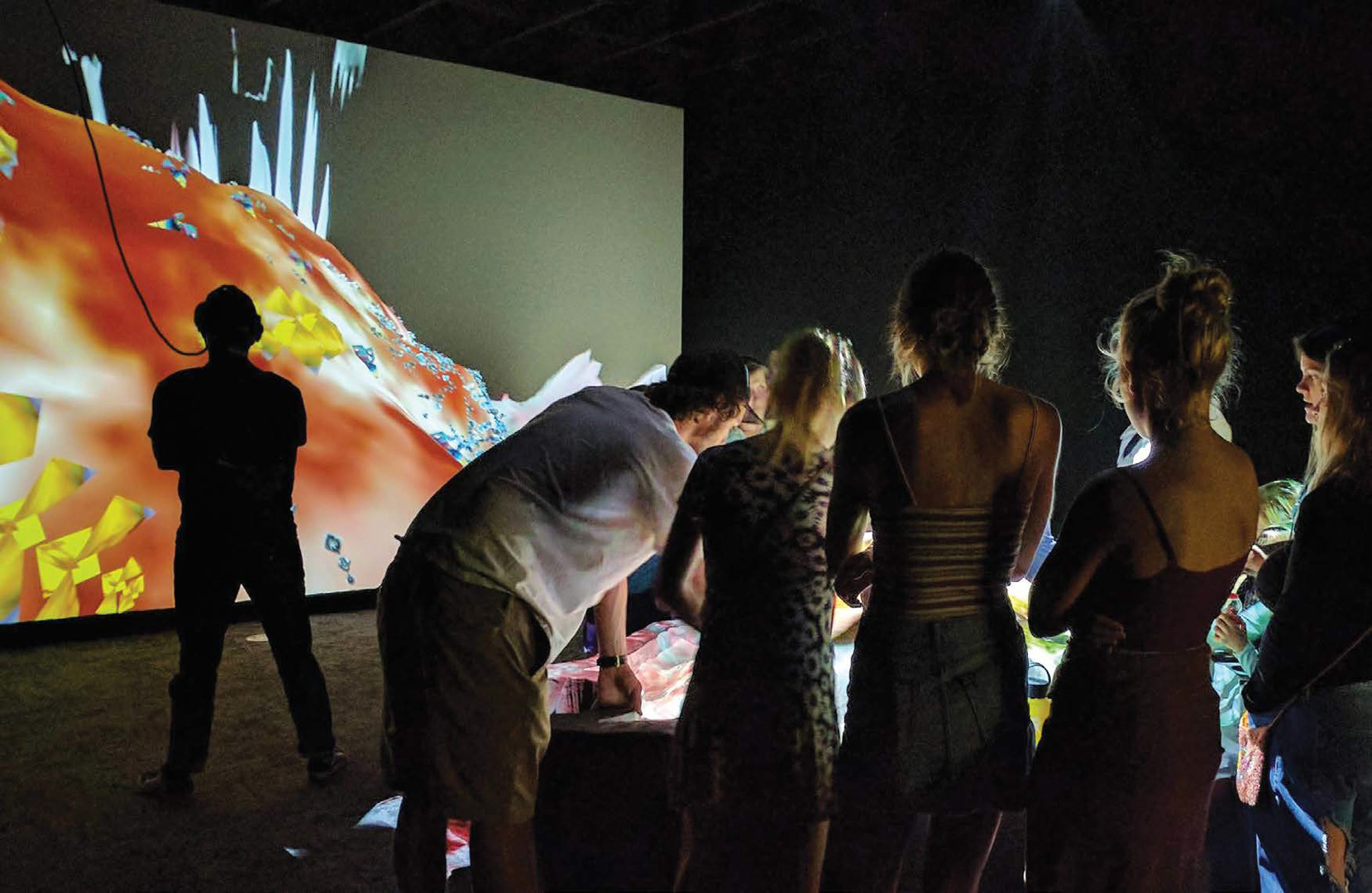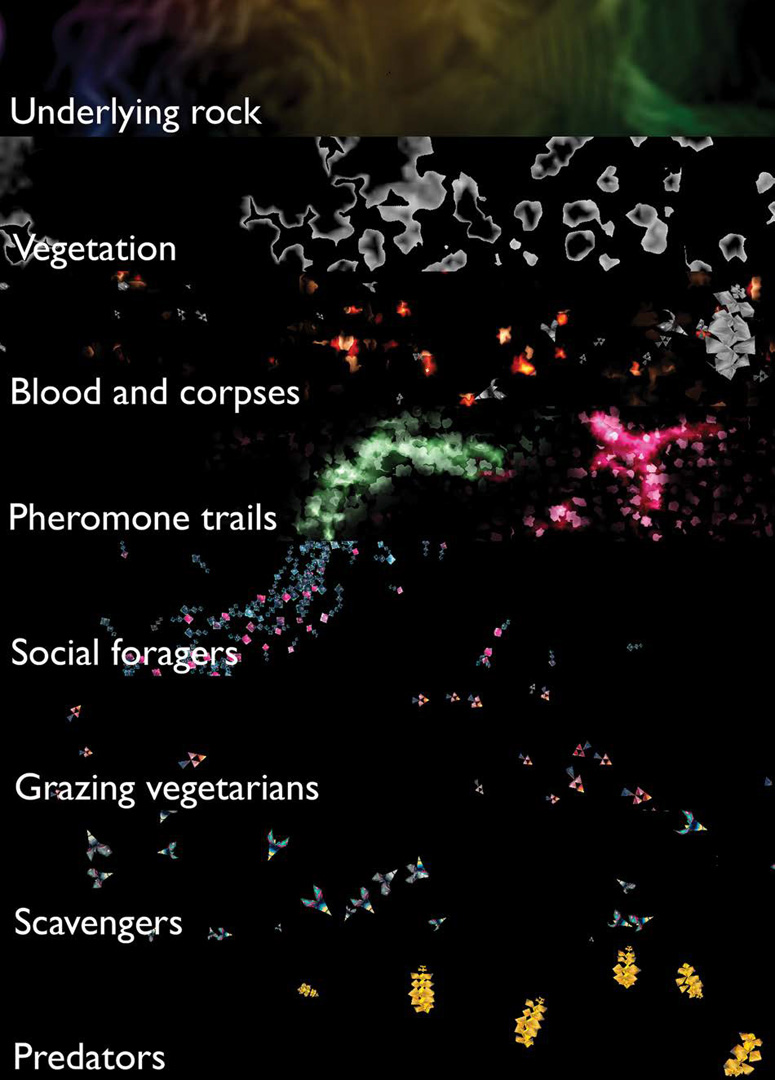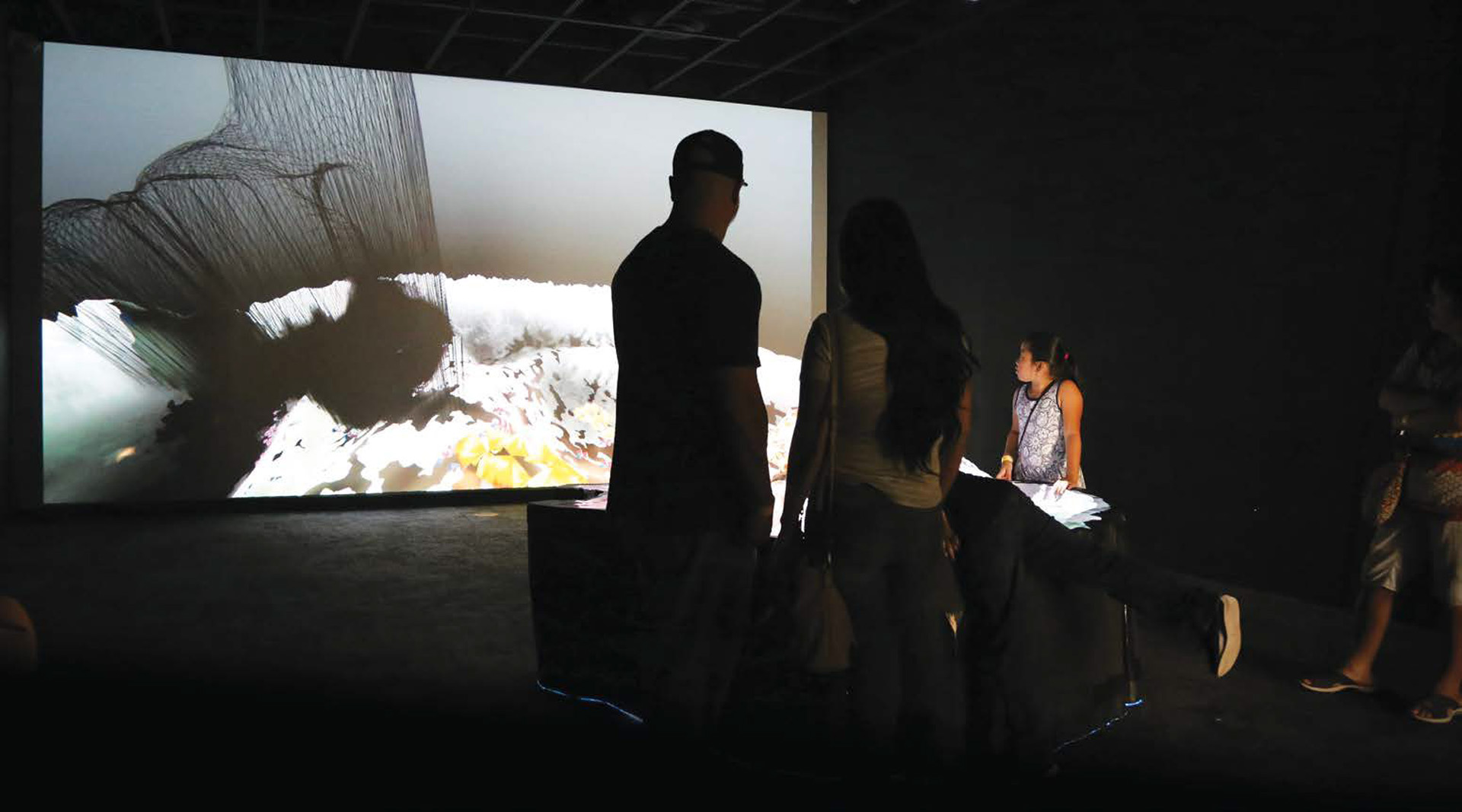“Inhabitat: An Imaginary Ecosystem in a Children’s Science Museum” by Wakefield and Ji
Conference:
Type(s):
Title:
- Inhabitat: An Imaginary Ecosystem in a Children’s Science Museum
Presenter(s)/Author(s):
Abstract:
Inhabitat is a mixed-reality artwork in which participants become part of an imaginary ecology through three simultaneous perspectives of scale and agency; three distinct ways to see with other eyes. This imaginary world was exhibited at a children’s science museum for ve months, using an interactive projection-augmented sculpture, a large screen and speaker array, and a virtual reality head-mounted display. This paper documents the work’s motivations and design contributions, along with accounts of visitors’ playful engagements and re ections within the complex interconnectivity of an arti cial nature.
References:
1. H. Ji and G. Wake eld. “Biotopes Computanionnels (Computational Biotopes),” in Stream 04: Les Paradoxes du Vivant ( e Paradoxes of the Living) (2017) pp. 304–316.
2. Chris Sugrue, Delicate Boundaries (2007): <http://csugrue.com/delicateboundaries> (accessed January 2018). 3. Everyware, Oasis (2008): <http://everyware.kr/home/portfolio/oasis> (accessed January 2018).
4 S. Reed et al., “Shaping Watersheds Exhibit: An Interactive, Augmented Reality Sandbox for Advancing Earth
Science Education,” American Geophysical Union (AGU) Abstract no. ED34A-01 (2014).
5. SEGA, Eederu Sunaba (2014): <http://edel-sand.sega.jp> (accessed January 2018).
6. A. Rowe and L. Birtles, “Glowing Path nder Bugs: A Natural Haptic 3D Interface for Interacting Intuitively with
Virtual Environments,” Leonardo 43, No. 4, 350–358 (2010).
7. Patricio González Vivo, Efecto Mariposa (2012): <https://vimeo.com/32321634> (accessed January 2018).
8. Although the sand was chosen as the safest product available, some museum sta raised concerns about dust
visible in the projections, and most of the sand was later removed, limiting this interaction.
9. Emergent play across huge scale di erences recalls Rafael Lozano-Hemmer’s Sandbox (2010): <www.lozano
-hemmer.com/sandbox.php> (accessed January 2018).








